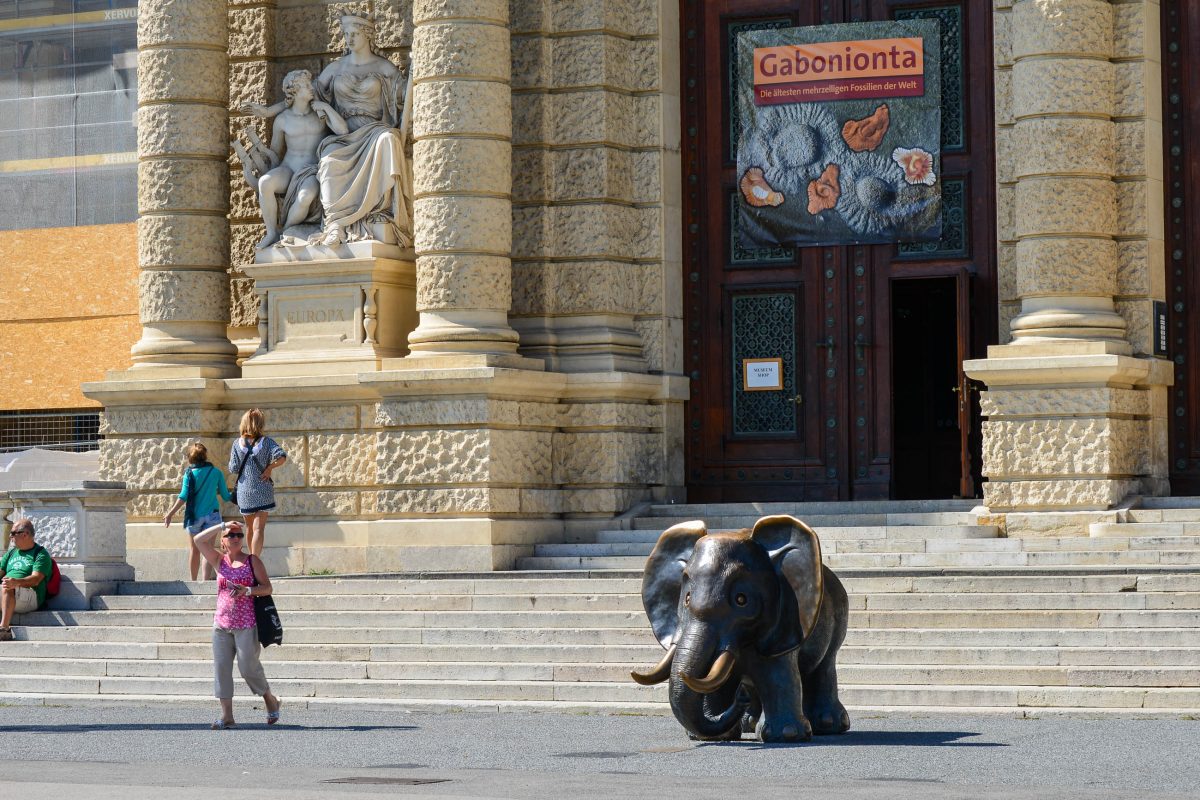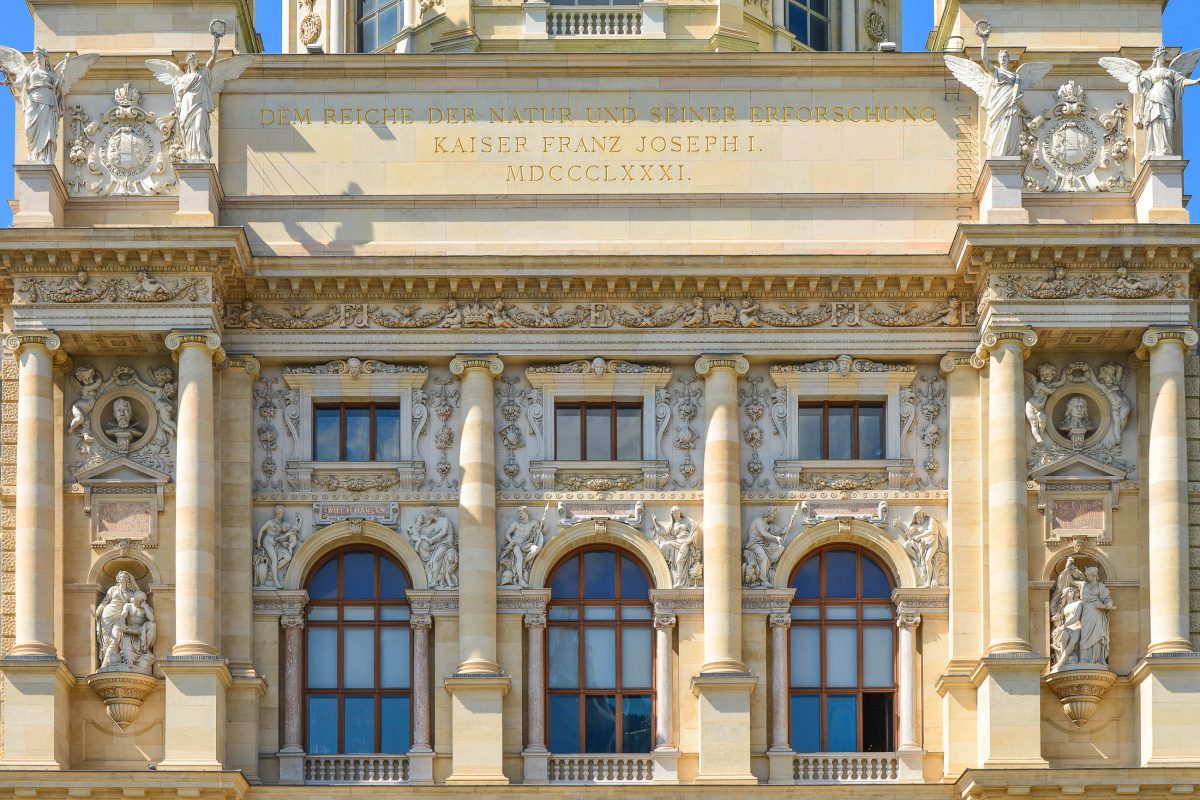Das Naturhistorische Museum im Herzen von Wien ist eines der größten Museen Österreichs und zählt mit unglaublichen 30 Millionen Objekten zu den bedeutendsten Naturmuseen der Welt.
Das Naturhistorische Museum in Wien beeindruckt nicht nur durch seine imposante Architektur, sondern bringt seinen Besuchern auf die atemberaubende Vielfalt der Natur näher – von damals bis heute. Mit seiner Sammlungs- und Forschungstätigkeit zählt das eindrucksvolle Museum zu den besten Museen der Welt.
Inhaltsverzeichnis
BILDER: Naturhistorisches Museum in Wien
Fotogalerie: Naturhistorisches Museum in Wien
Wie kommt man am besten zum Naturhistorischen Museum?
Das Naturhistorische Museum befindet sich am Maria-Theresien-Platz in prominenter Gesellschaft des gegenüberliegenden und nicht minder beeindruckenden Kunsthistorischen Museums und der imposanten Wiener Hofburg auf der anderen Seite der Ringstraße. Auch das Museumsquartier mit weiteren sehenswerten Ausstellungen ist nur einen Steinwurf entfernt.
Öffentlich erreichbar ist das Naturhistorische Museum am Burgring über die U2/U3 Station Volkstheater oder über die U2 Station Museumsquartier.
Tipp: Das Dach des Naturhistorischen Museums kann bestiegen werden und bietet neben der sehenswerten Architektur auf dem Museumsdach einen herrlichen Rundblick über die Wiener Innenstadt.
Ausstellungen im Naturhistorischen Museum

Präparierte Exemplare von stark bedrohten und bereits ausgestorbenen Tierarten machen das Naturhistorische Museum zu einem besonderen Ort der Magie und die Sammlung des Museums so unbezahlbar.
Im 2011 neu gestalteten Sauriersaal lassen Skelette und täuschend echte Figuren die Dinos wieder auferstehen. Besonders eindrucksvoll ist der bewegliche Allosaurier inklusive urzeitlichem Gebrüll und das erste Lebendmodell des faszinierenden Terrorvogels.
Neben den Tieren, deren Zeit auf dieser Erde bereits vorbei ist, widmet sich das Naturhistorische Museum in der Zoologischen und Botanischen Sammlung auch allem, was heute noch auf unserem Planeten kreucht und fleucht.
Der Geschichte der Menschheit ist die Anthropologische und Prähistorische Sammlung gewidmet. Neben Funden aus dem Jahrtausende alten Gräberfeld von Hallstatt ist hier die berühmte Venus von Willendorf ausgestellt, jene Figur einer Fruchtbarkeitsgöttin, die von den Anfängen der Menschheit vor 25.000 Jahren zeugt und in der Wachau gefunden wurde.
Abgesehen von der Welt der Lebenden finden in den Ausstellungsräumen auch Edelsteine und Mineralien Platz und seit November 2012 kann in einem eigenen Raum mit 1.100 außerirdischen Steinbrocken die weltgrößte Meteoritensammlung bestaunt werden.
Entstehung des Naturhistorischen Museums

Die Anfänge der imposanten Sammlung des Naturhistorischen Museums gehen auf den Florentiner Johann Ritter von Baillou zurück. Er hat Mitte des 18. Jahrhunderts mit 30.000 Objekten die damals größte Sammlung an Naturalien zusammengetragen.
Kaiser Franz Stephan, Ehemann von Kaiserin Maria Theresia, war davon so begeistert, dass er die gesamte Sammlung kaufte. 1748 ließ er sie in die Hofburg überführen und 1766 wurde sie für die Öffentlichkeit zugänglich.
Die Exponate wurden immer weiter ergänzt, sodass bald der Ruf nach einem eigenen Museum für die k.u.k. Hof-Naturalienkabinette laut wurde. Dessen Umsetzung erfolgte im Zuge der allgemeinen Stadterweiterung unter Kaiser Franz Joseph im Naturhistorischen Museum. Noch heute lautet die Inschrift aus dem Jahr 1881 am Museumseingang „Dem Reiche der Natur und seiner Erforschung – Kaiser Franz Josef I. – MDCCCLXXXI.“
Die beiden Architekten Carl von Hasenauer und Gottfried Semper, der auch die Semper-Oper in Dresden errichtete, wurden 1870 offiziell mit dem Bau der beiden Museen betraut. Am 27. November 1871 wurde der Grundstein für die beiden Prachtbauten gelegt, die zwischen den beiden Baumeistern jedoch nicht immer harmonisch ablief.
Dies führte dazu, dass Hasenauer die Bauleitung 1877 alleine übernahm. Die Eröffnung des Naturhistorischen Museums erfolgte am 10. August 1889, noch zwei Jahre vor dem Zwillingsbau des Kunsthistorischen Museums.
Weiterführende Links:
Offizielle Website des Naturhistorischen Museums mit Eintrittspreisen und Öffnungszeiten





